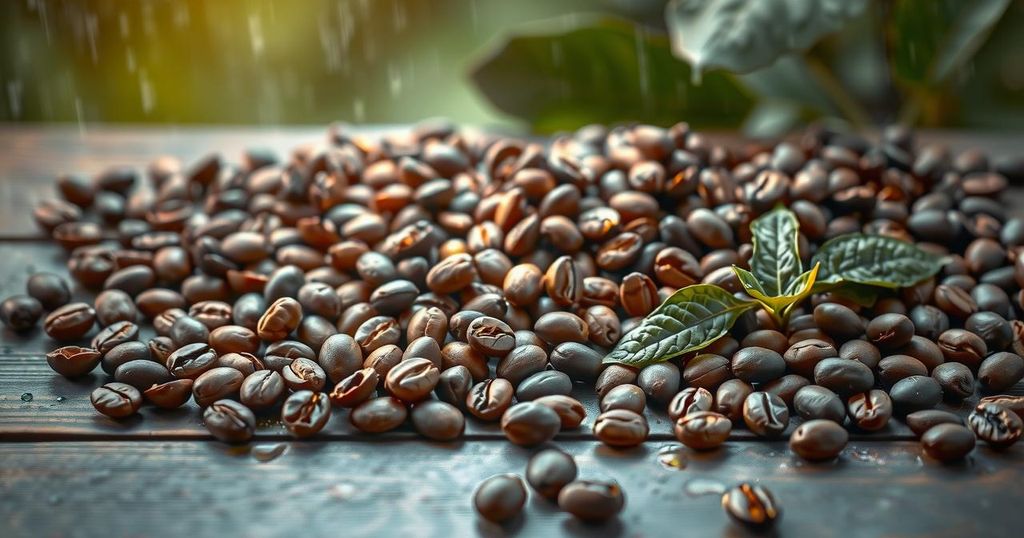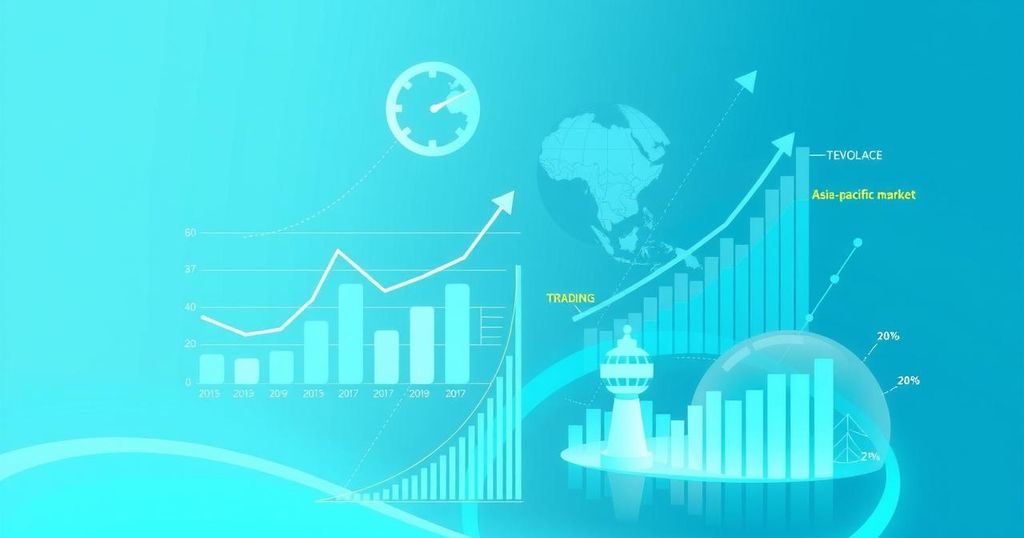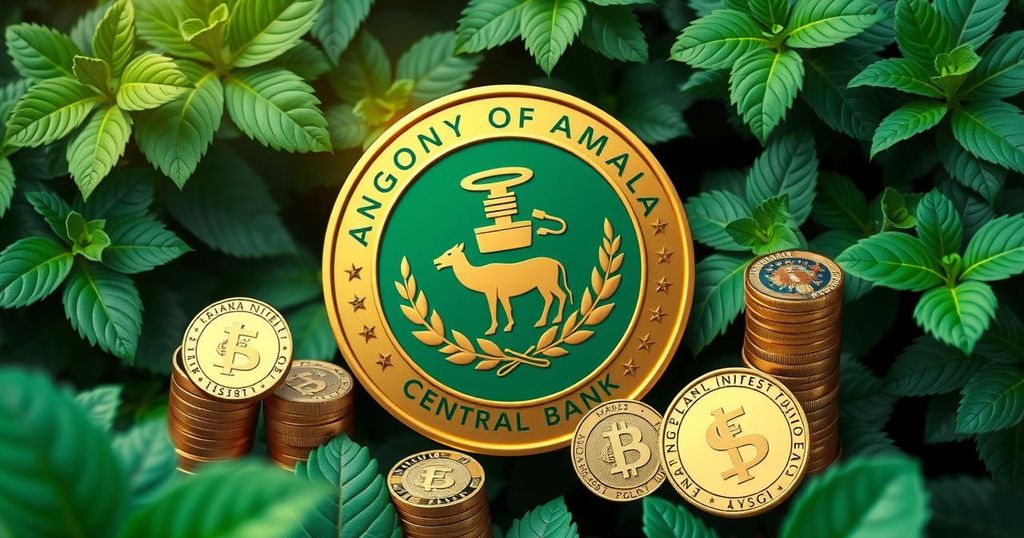Coffee Prices Experience Moderate Losses Due to Rain Forecasts in Brazil
Coffee prices declined on Friday, extending losses from the previous day, due to new rain forecasts in Brazil. May arabica and robusta coffee prices decreased by 0.71% and 1.36%, respectively. Increased coffee exports from Vietnam and rising inventories contributed to this decline. Supply concerns remain pertinent, particularly given the impact of prolonged drought conditions across producing regions.
On Friday, coffee prices experienced moderate declines, following a week of significant downturns attributed to favorable rain forecasts in Brazil. Notably, May arabica coffee (KCK25) closed down 2.75 points, or 0.71%, while May ICE robusta coffee (RMK25) fell by 74 points, representing a decrease of 1.36%. The meteorological service Somar reported that the ongoing hot and dry weather in Brazil is expected to transition into several days of rain next week, alleviating drought conditions.
The robusta coffee market also felt downward pressure from an announcement by Vietnam’s General Statistics Office, which indicated an increase in February coffee exports by 6.6% year-on-year to 169,000 metric tons. Additionally, forecasts predict consistent rain for a week in the Central Highlands of Vietnam, the country’s primary coffee-growing region, which is expected to further influence robusta prices. Vietnam stands as the foremost producer of robusta coffee beans globally.
Moreover, an increase in coffee inventories, specifically ICE-monitored robusta stocks reaching a one-month peak of 4,356 lots, has contributed to bearish market signals for coffee prices. Conversely, arabica coffee inventories decreased to a nine-and-a-quarter-month low of 758,514 bags as reported on February 18, but have since rebounded to a two-week high of 809,128 bags by last Thursday.
Recent rain reports indicated that Minas Gerais, Brazil’s largest arabica coffee growing area, received 11.4 mm of precipitation for the week ending February 22; this quantity represents only 24% of its historical average. The delays in these reports were due to the Brazilian Carnival holiday. Brazil remains the leading global producer of arabica coffee.
A noteworthy aspect of the market is the accelerated sales of Brazil’s coffee harvest compared to prior years. As of February 11, producers had sold 88% of the 2024/25 harvest, surpassing last year and the five-year average figures of 79% and 82%, respectively. However, sales of the 2025/26 crop are lagging behind, recording only 13%, below the four-year average of 22%, revealing potential supply constraints.
Ongoing concerns regarding supply continue to support coffee prices, evidenced by a reported decrease in Brazil’s January green coffee exports, which fell 1.6% year-on-year to 3.98 million bags, as stated by Cecafe. Additionally, the Brazilian government crop forecasting agency, Conab, projected a decrease of 4.4% in Brazil’s 2025/26 coffee crop to a three-year low of 51.81 million bags and a cut in the 2024 estimate from 54.8 million to 54.2 million bags.
The impact of last year’s dry El Niño weather conditions represents a longer-term challenge for coffee crops in South and Central America. Brazil has been experiencing its driest weather conditions since 1981, which has negatively affected coffee trees during their crucial flowering phase—an essential time for the development of the 2025/26 arabica coffee crop. Similarly, Colombia, the world’s second-largest producer of arabica coffee, is only gradually recovering from last year’s drought.
Robusta prices are also being supported by falling production levels due to drought in Vietnam, with the 2023/24 crop yield dropping by 20% to 1.472 million metric tons—the lowest yield in four years. The USDA FAS projected a minor reduction in robusta production for the upcoming marketing year from 28 million to 27.9 million bags. The Vietnamese coffee export statistics further indicated a 17.1% year-on-year decrease to 1.35 million metric tons. Conversely, the Vietnam Coffee and Cocoa Association recently revised its production estimates upwards for the 2024/25 cycle to 28 million bags from 27 million.
Market trends indicate that larger global coffee exports generally exert downward pressure on prices. According to Conab, Brazil’s 2024 coffee exports have risen dramatically by 28.8% year-on-year, reaching a record 50.5 million bags. However, the International Coffee Organization (ICO) noted a year-on-year decrease of 12.4% for December global coffee exports, reflecting a decline to 10.73 million bags and a 0.8% dip for the October-December period, settling at 32.25 million bags.
The USDA’s biannual report presented a mixed outlook for coffee pricing. The FAS estimates that world coffee production in 2024/25 will increase by 4.0% year-on-year, resulting in a total of 174.855 million bags, including rises in both arabica and robusta production. Yet, ending stocks are projected to decline by 6.6% to 20.867 million bags—a figure that represents a 25-year low. Concurrently, Brazilian coffee production for 2024/25 continues to face downward revisions.
Volcafe’s projections indicate a concerning forecast for the 2025/26 marketing year, with arabica coffee production estimates for Brazil reduced significantly to 34.4 million bags due to severe drought effects observed during crop tours. A global arabica coffee deficit of 8.5 million bags is anticipated, surpassing previous deficits and marking the fifth consecutive year of shortfalls.
Rich Asplund, upon publication of this article, held no current positions in any securities mentioned. All information within serves strictly informational purposes. For further details, please refer to the Barchart Disclosure Policy.
In summary, coffee prices have faced recent declines due to favorable rain forecasts for Brazil and increased inventories. While arabica prices are showing moderate recovery, robusta prices are experiencing downward pressure from rising exports in Vietnam and broader supply concerns. Seasonal weather phenomena, and notably El Niño’s impacts, continue to shape the coffee market outlook. Producers’ accelerated sales of coffee indicate limited future supply, exacerbated by unfavorable growing conditions in major coffee-producing regions. The market remains volatile, with potential deficits looming for upcoming harvests.
Original Source: www.tradingview.com




Post Comment